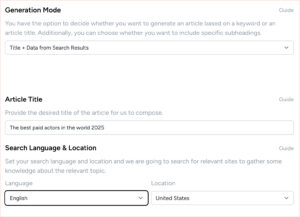What do Automattic, Zapier and Toggl, among many others, all have in common with Topcontent? Their workforce is made up of remote workers. “Remote working is here to stay,” says a recent report by Buffer, and, if you’re an employer, it’s time to pull your socks up. This article explores how you can prepare your business for remote working.
Why should I consider introducing flexi-working in my company?
Topcontent is a remote organisation. We’ve found that working remotely comes with a ton of benefits for both employer and employee:
Company |
Remote worker |
| Less costs for physical office space, furniture and equipment help increase the profit margin | Little to no commuting costs, no need to buy workwear |
| Brighter, more focused employees who have not been worn out due to their daily commute | No travel, hence travel time can be dedicated to productive work time |
| Higher work quality handed in by employees who have designed their own timetable |
Flexible schedules; work is done at the time that best suits the employee |
| Sustainable practices – less employees travelling to work helps reduce carbon footprint | Freedom of location – remote workers can work on the go, from their local coffee shop or even from the beach |
| Less employee turnover; contented employees want to keep their jobs for longer; disabled or senior employees can still work; location-free employees available from all around the world | Wider choice of available jobs due to location independence |
| Less expenses spent on paid sick days or vacation leave; contented workers put in more hours | Working remotely lets you work around your needs;
you can finish up projects while on vacation or work through minor illnesses from the comfort of your own home |
Are you ready to revolutionise your business with remote organisation? Here’s how to make it happen.
#1 Communication is key

Good communication is key to help setting your employees’ minds at rest, especially if you employ a younger workforce that thrives on feedback. Taking the time to point out the advantages of either introducing freelancers to your existing team, or granting a selection of employees the opportunity to work flexibly, will do wonders. This way, not only will your team start seeing things from your perspective, they will also feel more of value to your organisation – something you will want if you are expecting them to be productive.
Communicating your intentions will also give employees a chance to voice their concerns or discuss possible scenarios, and minimize the chance of internal unrest.
#2 Introduce the change gradually
You may be tempted to send your entire team home with new laptops and immediately close up your office space, but, in truth, going flexible can hardly happen overnight. It’s best to introduce the change gradually rather than burden your employees with a sudden transition. You can start by hiring the services of an expert related to your field who is not available locally. Your current employees will start to adapt to more technologically-based communication, and hopefully start realising the advantages a remote workstyle may hold for them.
Once you have fully implemented the first, tiny change, you can afford to pick up the pace. Throw in a couple of other freelancers, or offer some of your existing employees the chance to work from home.
#3 Do a dry run
Before you take the leap to a 100% flexible workforce, it might be a good idea to invite some of your employees to try it out for a few days before making the change official. For example, one or more of your employees could work on a project from home before deciding whether remote working is for them. In this way, you are allowing your company to “feel the waters” before actually making the plunge.
#4 Reap the benefits!

Need more tips?
Our own remote workforce at Topcontent was created in much the same way. Thanks to our remote organization, we have grown from a small content creation company to one that offers services with the help of freelancer writers and in-house workers situated all around the world. Check out our blog if you want to learn more!





